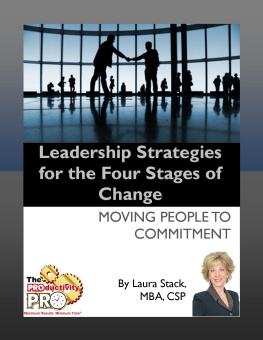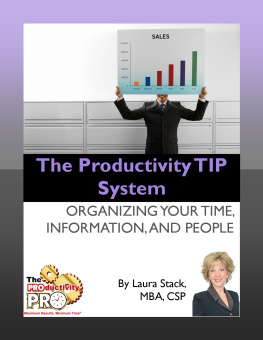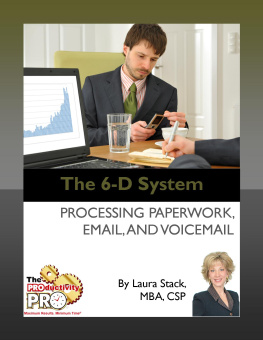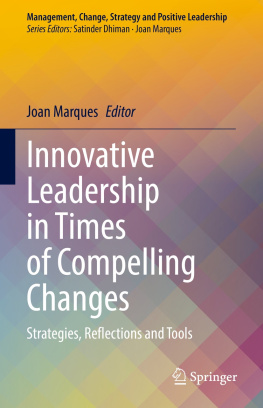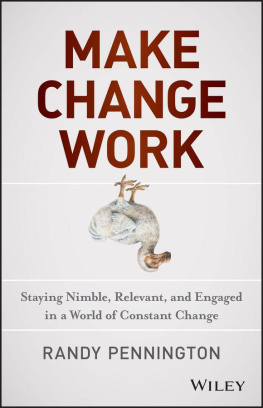Table of Contents
LEADERSHIP STRATEGIES FOR THE FOUR STAGES OF CHANGE:
Moving People to Commitment
This ebook will cover leadership strategies for the fourstages of change: moving your employees to commitment.
Lets say youre in a meeting with twenty of your colleaguesat work, and the CEO walks into the meeting and announces, Beginning tomorrow,there are going to be some big changes around here. I wont be able to giveyou the details right now, but tomorrow, same place, same time. He then turnsaround and walks out.
What thoughts would be going through your mind over the nexttwenty-four hours? The next day, there you are and the boss walks into themeeting. He says, Remember the changes I mentioned yesterday? Heres whatthey are. Beginning today were going to change the colors of all the officewalls from white to beige.
If youre like most people, youd probably shake your headand look very confused, but heave a large sigh of relief, because you assumedthat those big changes would be negative. This natural tendency of people toassume the worst is at the core of why leading group change can be sochallenging. Lets start by taking a look at why change is so stressful.
Why Change Equals Stress
We knowintellectually that change is necessary. Its constant. Its inevitable. Weall know that in our minds, but most employees dont just sail through change. You probably dont either.
Lets explore, a bit, why change is so stressful toemployees. Why do they fear it so much? If you think about a past change thatyouve personally encountered on the job, in your career, or in your personallife within the past year, how would describe your reaction to that change inan emotional context? What did you go through? What are you going throughright now?
The Change Process is Difficult
1. We feel powerless and out of control when faced with a change.
When you compare the difference between a change you had nocontrol over versus a change you had input into versus something you wanted toinitiate or change, whats the difference? Control. Control is the mostimportant characteristic of change thats easy to manage. Lack of control isthe number one characteristic of change thats stressful.
You have control over your friends, your relationships, andyour career, and you decide for yourself whats right and whats wrong. Youdecide whether you should stay in this weekend or go out. You decide whetherto vote Democrat or Republican. You decide who to see, what to wear, and whatto eat.
You have very little control, however, over the government,economic policy, the rise and fall of the stock market, Mother Nature, internationalevents, and yes, company direction. Unless youre the top dog, you often cantcontrol what happens to your organization.
Change can disrupt the lives ofyour employees and force them to modify their plans. Often there is very little they can do, yet they areoverwhelmingly affected by it. Realizing that they cant control certainthings, they stew and worry and literally make themselves sick, but change isgoing to happen nonetheless. It just will. People often dont get a warning. Theyre often not prepared, and that can be very frustrating.
2. What was true is no longer true.
When you think of the history of the planet Pluto oops,its no longer a planet. It was always the smallest and usually the mostdistant of the nine planets in our solar system, and it was discovered in1930.
Today, though, the International Astronomical Union hasreclassified the planet Pluto, and its no longer a planet. The IAU said thatPluto is actually not a planet. Its simply another icy rock in the sea ofasteroids beyond the planet Neptune. It received a very major demotion.
The reasons are many. Planets are either rocky or theyreicy. Well, Pluto isnt either. Its very difficult to classify. Planets haveorbits that are roughly circular, but Plutos orbit is a bit goofy. Its veryelliptical. In fact, its frequently closer to the sun than Neptune. And itsjust too small. Seven of the moons in our solar system are actually largerthan Pluto. Even our Earths moon is larger than Pluto.
So, Plutowas demoted, and its no longer a planet. And you know what? Some people areupset. Some people are mad. There are several generations of people who grewup being told there are nine planets, and the ninth planet is Pluto. Theydont like this new truth. They dont like this new labeling. They like theirold truth and their old labeling. We live in a world where we oftentimes dont like newtruths, particularly when they threaten our old truths.
3. Were fearful.
We fear the unknown. What if this doesnt work? What if Ilose my job? What if I fail? What if I dont like the new reality? I couldlose position, income, or power. My work could be more difficult. I mightlose some friends. Until youre through it, youre not sure what willhappen.
You might have seen a survey a few years ago on the frontpage of USA Today. They asked 10,000 Americans this question: How manytimes a week do you think of quitting your job? I was surprised to hear theanswer: it was three times a week. Average that out across the entirepopulation. That is a lot of folks who are unhappy with their jobs.
Why do they think about quitting their jobs? The number oneanswer was stress. Well, everyone has stress, so they probed deeper and foundthat what people are missing is a sense of certainty. Its as if they dontknow where the floor is. They take a step and the floors not there, thenanother step and the floors still not there. What happens is that theyre notclear on where the next step is, and that creates anxiety.
Its veryimportant for leaders to understand the way that employees are feeling whentheyre faced with a change. There is a definite process that people gothrough four stages whenever they are faced with an upcoming change. Theycan stay in certain stages a long time or a very short time. How you, as theleader, handle the changes that your employees are faced with will determinehow long they either stay stuck or how quickly they move through that changeand sail on to the next step.
The Four Stages of Change
There is a predictable set of four stages that people gothrough when they experience change.
1. Shock
The first response to a significant or unexpected change isoften shock. What? No way. Thats just a rumor, right? Consider your ownreaction to changes in your life. You might have experienced a kind ofnumbness or disbelief, but you carried on with a business as usual kind ofattitude. You might even have said, Ah, thatll blow over. Itll neverhappen.
The key is that there are a lot of different reactions, andemployees respond in different ways to organizational changes, especially if thechanges are unexpected or poorly planned. The reaction can be shock. It canbe an intense feeling of disequilibrium. It can be unbelief. It can beastonishment such as What? Thats not true. Why would that happen? It canbe guilt or a feeling that a personal error has brought about the change. Itcan be rationalization, trying to make sense of the change. Whatever thereaction, everybody experiences one when first faced with a change.
2. Worry
When employees first realize, Okay, this is indeed going tohappen, the personal stress level can actually rise. In this stage, we oftenlook for someone or something to blame. This is when rumor mills are activatedand water cooler talks increase. Employees may worry about theirability to get through the change and stew about what will happen. They mightfeel mentally or physically sick. Stress levels rise. There may be feelingsof anger, loss, hurt, or doubt. In this stage, employees can actually startmourning the past rather than preparing for the future. There can even bepeople who pretend its not happening and move back into shock.

